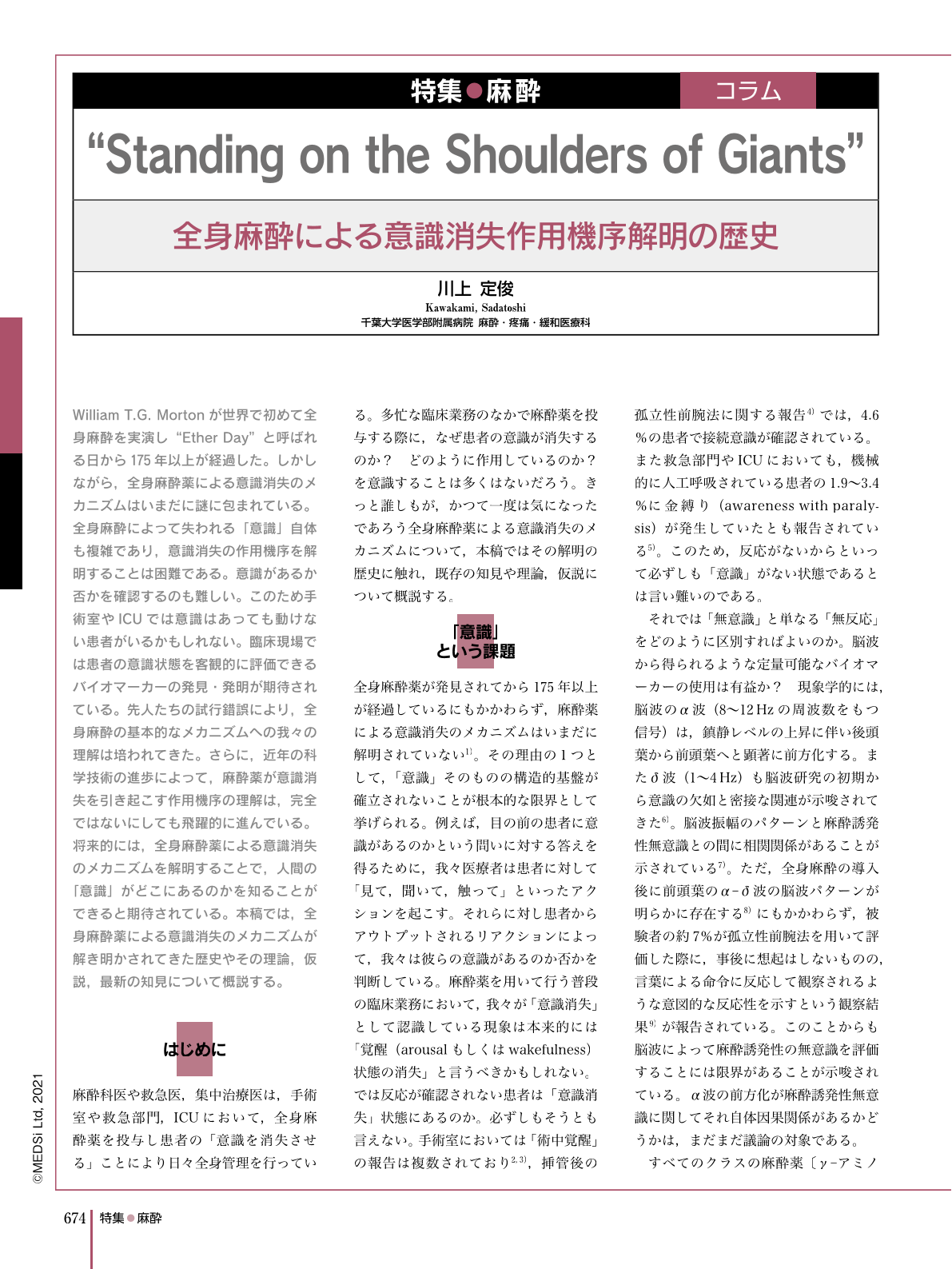Japanese
English
- 有料閲覧
- Abstract 文献概要
- 1ページ目 Look Inside
- 参考文献 Reference
William T.G. Mortonが世界で初めて全身麻酔を実演し“Ether Day”と呼ばれる日から175年以上が経過した。しかしながら,全身麻酔薬による意識消失のメカニズムはいまだに謎に包まれている。全身麻酔によって失われる「意識」自体も複雑であり,意識消失の作用機序を解明することは困難である。意識があるか否かを確認するのも難しい。このため手術室やICUでは意識はあっても動けない患者がいるかもしれない。臨床現場では患者の意識状態を客観的に評価できるバイオマーカーの発見・発明が期待されている。先人たちの試行錯誤により,全身麻酔の基本的なメカニズムへの我々の理解は培われてきた。さらに,近年の科学技術の進歩によって,麻酔薬が意識消失を引き起こす作用機序の理解は,完全ではないにしても飛躍的に進んでいる。将来的には,全身麻酔薬による意識消失のメカニズムを解明することで,人間の「意識」がどこにあるのかを知ることができると期待されている。本稿では,全身麻酔薬による意識消失のメカニズムが解き明かされてきた歴史やその理論,仮説,最新の知見について概説する。
It has been 175 years since William Morton demonstrated the world's first general anesthetic and called it “Ether Day.” However, the mechanism of loss of consciousness caused by general anesthetics is still shrouded in mystery. The “consciousness” lost by general anesthesia itself is complex, and it is challenging to elucidate the mechanism of action of general anesthetics. It is not easy to verify that a person is conscious or not. So, there is a possibility that there are patients in the operating room or intensive care unit who are conscious but unable to move. The discovery and invention of biomarkers that can objectively evaluate the state of consciousness of patients are expected. Through trial and error of our predecessors, our understanding of the primary mechanism of general anesthesia has been built. Recent advances in science and technology have dramatically, if not wholly, improved our understanding of the mechanism of action by which anesthetics cause loss of consciousness. In the future, elucidating the mechanism of loss of consciousness induced by general anesthetics is expected to help us understand where human “consciousness” lies. In this article, we outline the history, existing knowledge, theories, and hypotheses on the mechanism of general anesthesia.

Copyright © 2021, MEDICAL SCIENCES INTERNATIONAL, LTD. All rights reserved.


